






































































• When I think of Johnny Appleseed, I envision a kindhearted barefoot backwoods wanderer planting delicious apple trees for frontier families to enjoy. This is only partly true.
• In the late 1790’s settlers were granted a 100-acre homestead in the frontier west of Pennsylvania but they were required to plant 50 apple trees and 20 peach trees in three years. These orchards established legal ownership of the land.
• John Chapman, aka Johnny Appleseed, was a professional orchardist and nurseryman. He realized he could travel ahead of the settlers to the new frontier and plant these orchards, and then return years later and sell the trees for profit to incoming settlers.
• These apples were not the sweet apples we enjoy today. According to Smithsonian Magazine, he planted his orchards from seed, meaning his apples were, for the most part, unfit for eating and were used for making hard cider, apparently the beverage of choice at the time.
• Chapman was also a missionary of the New Church, a Christian denomination established the late 18th century, and he preached that nature and God are intertwined. He spread these teachings wherever he planted his seeds.
• Accounts of his travels indicate he also carried medicinal plants and their seeds which gave to the Native Americans. He was welcomed by local Indians wherever he traveled.
• He loved all of God’s creatures, including mosquitoes, and became a vegetarian.
• John Chapman’s 4-times great grandnephew, also named John Chapman, still maintains small apple orchards in Athens, Maine. At least one tree in his stock is reportedly descended from his forebear’s own trees.








Vero’s Voice Magazine is published monthly. Copyright © Vero’s Voice Magazine 2010 - 2024, all rights reserved. Reproduction of contents in print or electronic transmission in whole or in part in any language or format must be by express written permission of the publisher. All articles, descriptions and suggestions in this magazine are merely expression of opinions from contributors and advertisers and do not constitute the opinion of the publisher, editor or staff of Vero’s Voice Magazine, and under no circumstances constitutes assurances or guarantees concerning the quality of any service or product. Vero’s Voice Magazine specifically disclaims any liability related to these expressions and opinions. The advertiser agrees to hold harmless and indemnify the publisher from all liability.

with the utmost care and attention.

Every day, we help turn dream smiles into a reality. As one of the most sought-after Vero Beach cosmetic dentists, Dr. Planes and the team here at Planes Dental Arts have transformed the teeth of countless patients. We know how important a beautiful smile is and enjoy watching our patients gain renewed confidence in their appearance. We also know how important good health is to maintaining a new smile. From fillings and cleanings to implants and straightening, we offer preventive, restorative, and cosmetic solutions to fit the needs of the whole family.
state-of-the-art technology, it is easy to see why so many people choose Planes Dental Arts and Dr. Alex Planes as their Vero Beach cosmetic dentist.
Whether you need general dental care or feel embarrassed or unhappy with the appearance of your smile, we are prepared and ready to address your concerns. Contact us today to schedule your consultation and find out how dental care at Planes Dental Arts can meet and exceed your expectations.



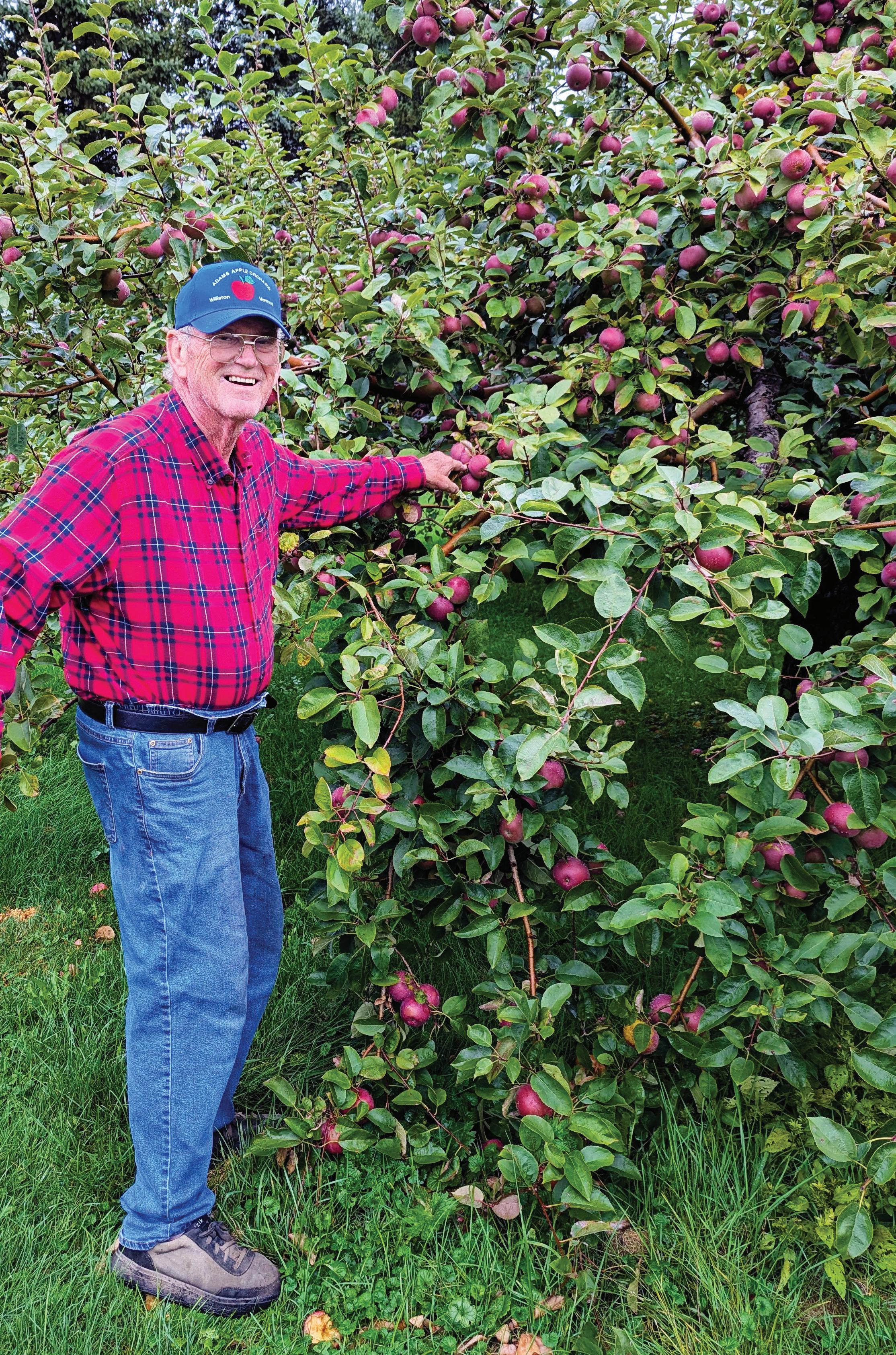

While in Vermont, we’ve enjoyed shopping at the Adams Farm Market and we pick apples at their orchard in September. Off in the distance beyond the apple trees is a spectactular panoramic view of the Green Mountains.
CONTINUED NEXT PAGE
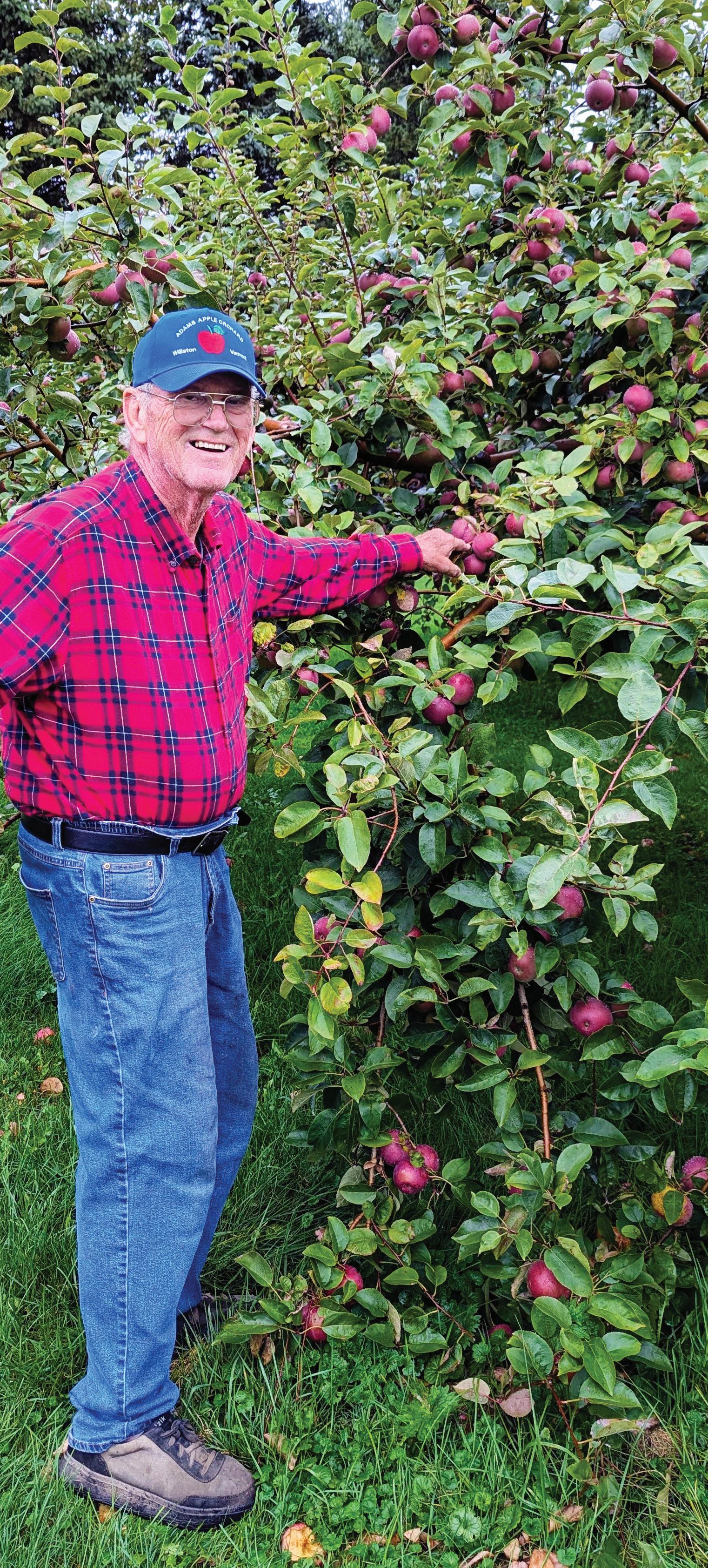
Rhett Palmer:
It’s a beautiful crisp cool fall day here in Vermont and I’m talking with Mr. John Adams at his apple orchard overlooking the beautiful Green Mountains. So, tell me, how did all this come to be?
John Adams:
About 52 years ago I bought a piece of property in Williston, Vermont. It was part of a subdivision of a dairy farm. It was a grass field. And two years later we planted our first 20 trees. The intent there was to feed the people that we had, friends that we had, and not much else.
But there was so much open land that suddenly we decided to create our own little orchard, and we put in another 100 trees the following year, and ultimately 500 or 600 trees on that five-acre property.
How many years does it take to be able to bear fruit on those trees?
A young tree that’s being put in oftentimes has little or no limbs; it’s usually bare root and just almost like a stick out of the ground, and it takes about four or five years before you see apples of any consequence on that tree. You might get a third of a bushel or half a bushel at the five-year stage, but by the eighth year you’re getting two or three bushels, maybe four bushels. So it takes a while to develop an apple tree.
So what did you do before growing apples?
I worked for IBM for 34 years. I was hired as an IBM computer programmer. And I retired in 2001, and now I’m working my retirement project. I don’t play golf; I play with all my apples here and I have people who enjoy coming out and seeing us.
So what’s a programmer doing buying up all this land? Did you buy it to grow apples? Well, it was our homestead. This was going be where we were going live. We just happened to have a lot of land and we decided to effectively use that land for a purpose.
I noticed there was a man out in the orchard today and he was putting apples into big wooden crates and there were a lot of ladders out there. So do you still climb a ladder or no? I don’t climb a ladder. I have one man, he grew up picking apples since he was a kid. And he came by here 20, 25 years ago at least, and he’s been picking in my orchard so that I have apples for my store, for my cider, for my applesauce. He provides me with apples that I need for my business.
The rest of the orchard is picked by individuals in a U-pick environment.
You’ve been doing this for how many years again? We’ve been selling apples probably for about 44 years. We’ve owned the orchard for about 52 years. But economically selling them, it’s probably been the last 44, 45 years.
So tell me, how many visitors would you say you get here in a season? During the week it’s relatively

quiet. We had a group of 40 people here first thing this morning from one of the centers downtown.
What kind of a center? They help people, the homeless, and that kind of thing.
And they come out and pick? Yes. It was the Howard Center. I wasn’t dealing with them; my daughter was here with them this morning.
And then also we had a school tour come out. So early on we must have had 60, 70 people picking.
We’ll get a small group during the week, a business group that will leave business for couple hours and all the employees will come out and pick.
Do you also deal with the local college, UVM?
Yes. When it’s parents’ week the kids will bring their parents out. Champlain College, St. Mike’s, we’ll get some of each coming out here because we’re relatively close to all of them.
Well, you seem to be having a lot of fun. It is quieter on the weekdays. Early in the season we’ll probably have 30 customers. At this time we probably have 50 during the day. Maybe next week it might be 60 during the day. But on the weekends we’ll probably have 1,500 -1,500? 1,500 families buying.
Wow! Between 1,500 and 2,000, something like that.
Do you ship any, or no? No, it’s all U-pick. And what little we do pick ourselves goes to our Adams Farm Market just below us over here.
So you own that market, too? Oh, yes.
That’s where we go for corn and tomatoes. We’ve been doing business with you for a few years. This is the first time we got a chance to meet, though. I’m down at the market some, but I spend more time down there planting, not in the store. Early on I was down there a lot and people recognize me quite readily because of it. But they know me from the orchard more than anything now because I’m very interactive with the customers. And I try and tell them some things that they might otherwise not know about the orchard, about picking.
Tell us something that we might not know about the goodness of apples for us. Well, the skin and the flesh have various vitamins and components that are very healthy for you. It’s very truthful that “an apple a day will keep the doctor away” to some extent. But I don’t have the details for exactly what’s in them, but they are healthy.
They say that Johnny Appleseed may actually have had a calling to do what he did. He was an interesting guy. He spread apples throughout Ohio, Indiana, and traded for goods and services along the way.
CONTINUED PAGE 11

“The interesting fact I found out about Johnny Appleseed was that during prohibition, … a lot of his orchards got ripped out of the ground because they didn’t want hard cider being made.”







The interesting fact I found out about Johnny Appleseed was that during prohibition, the government was very excited about no alcohol. So a lot of his orchards got ripped out of the ground because they didn’t want hard cider being made.
Oh! I haven’t officially confirmed that, but somebody led me to believe that was the case. I think they came from that part of the country.
But he had populated a lot through the 18th century, his orchards were the prevalent thing out there for orchards, and they lasted at least until prohibition, I guess.
At least they survived. Where is your orchard where we are right now? We’re about a mile from the center of Williston town itself. Just off either Route 2A or Route 2, about a mile in either case. Easy to get to, we’re just barely out in the country. So we have beautiful views of the whole mountain range, from Mt. Mansfield all the way to Camel’s Hump.
It’s gorgeous. I don’t want to leave it’s so peaceful here. We have a panoramic view of majestic mountains in the background with the apple orchard right in front of us. And it also gets very colorful in about three weeks because the foliage changes really well, especially on the hills over there. We see a lot of beautiful color.
The apple trees don’t really change all that much until after everything is down. They keep their leaves well into the fall and they aren’t one of the colorful trees. But the trees behind them with the mountains and the foothills make it a very picturesque area here.
You squeeze your own cider here. We do. We make unpasteurized cider. We do just under 3,000 gallons a year. Generally speaking, most of the season we're doing McIntosh cider. Early on, we use anything early that's sweet for a couple, three weeks, and then we switch over to pure McIntosh. You can make hard cider out of it because it hasn't been pasteurized. No chemicals are added. It's pure apple juice that's crushed out of the apples and put in jars and sold. And if you don't drink it in the first 12 days, you're going to be dealing with another drink. [laughter]
Are you actually related to the John Adams? No, we’re related to Sam, the cousin. He was a renegade, more of a fighter. He was a cousin of the president’s. Not the beer guy.
Thank you very much, Mr. John Adams. Nice talking to you. Nice talking to you.

Apples are a member of the rose family, as are peaches, pears, cherries and plums.
There are over 7,500 different types of apples in the world, with more than 2,500 varieties grown in the US.
Apples are the second most consumed fruit in the United States, after bananas.
Apples can range in size from as small as cherries to as large as grapefruits.
Apple trees can take 4-5 years to produce their first fruit.
It takes about 36 apples to make one gallon of apple cider.
A real-life Granny Smith discovered the apple now known as Granny Smith. Mary Ann Smith from Australia discovered the apple tree in her backyard and began cultivating the now-popular variety in the late 1800s.
Apple pie is the most popular pie in the United States.
Apples are one of the few fruits that continue to ripen after they are picked. They’ll ripen six to ten times faster at room temperature than refrigerated.
The largest apple ever weighed just over 4 pounds and was grown in Japan.
An average apple weighs about a third of a pound.
Apples are a nutritious fruit containing dietary fiber, vitamin C, potassium, and antioxidants.
Ancient Greeks considered apples a symbol of love and beauty.
The average apple contains about 10 seeds.
Apples have been grown for over 3,000 years in Asia and Europe.
The phrase ‘apple of my eye’ dates back to Old English times.
Apples float because they are 25% air.
China produces about half of the world’s total apple supply.
Refrigerating apples can extend their shelf life up to 10 times.
Crabapples are the only apples native to the US. They’re very sour and are usually made into crabapple jelly.
The only apple variety native to Canada is the McIntosh apple.
Washington State produces more than 60% of the country’s total apple crop, followed by Michigan, New York, Pennsylvania, California, making up the majority of the US apply supply.
Johnny Appleseed was a real person named John Chapman. He is celebrated as a folk hero for his contribution to spreading apple orchards in the United States.
Archaeologists have found evidence that people have been eating apples since 6,500 BC.

by Danny Howes, EA, RFC
As millions of Americans approach retirement, many are left wondering about the future of Social Security. Will it still be there when they need it most? With discussions of possible reforms to the program, it’s no surprise that concern is rising. Social Security, originally designed to provide financial stability for retirees, has become a key source of income for many. Yet, experts warn that the program may face funding challenges if changes aren’t made soon. This raises an important question: How can individuals prepare for potential changes to Social Security?
In this article, we will explore why Social Security’s future is uncertain, what changes might be on the horizon, and how you can protect your retirement by supplementing Social Security with personal savings and other retirement plans.
Social Security has long been a safety net for retirees, but the system is under increasing pressure. The Social Security Administration (SSA) reported in 2023 that without any legislative action, the program’s trust funds could be depleted by 2034. This is largely due to the aging population— baby boomers are retiring in large numbers, leaving fewer workers to contribute to the system. Currently, there are fewer than three workers supporting each retiree, compared to five workers per retiree in 1960.
At the same time, people are living longer, meaning they are drawing benefits for more extended periods than the program was initially designed to support. Combine this with lower birth rates and the declining labor force, and it’s clear why Social Security is facing a financial shortfall.

While Social Security isn’t going to disappear, reforms are likely necessary to keep the program solvent. Some of the potential changes could include:
• Raising the Full Retirement Age (FRA): One of the more frequently discussed reforms is increasing the FRA beyond 67. This would reflect longer life expectancies but could reduce benefits for those who claim early.
• Increasing Payroll Taxes: Another option is raising the cap on earnings subject to Social Security taxes. Currently, only income up to a certain level is taxed, but this threshold could be raised or eliminated, requiring higher-income workers to contribute more.
• Benefit Reductions for High Earners: Some proposals suggest reducing or freezing benefits for higherincome retirees as a way to preserve funds for lower-income recipients who rely more heavily on the program.
While it’s difficult to predict exactly which reforms will pass, it’s important to consider how these changes could impact your retirement income.





by Steve Glaser OF VERO YOUNG VOICES

First, I go to the gym to relax and relieve some stress. Then I focus on reaching out to a past client and see how they are doing.
Yali Genereux, BROKER ASSOCIATE NEXT HOME TREASURE COAST

A few things come to mind. Throwing myself into an art project, sitting on the beach relaxing, watching the waves and wildlife. I find this to be very meditative and calming.
Michelle Nevaeh NEVAEH CREATES


Reflect! Redirect! Reset! Take time for quiet time, just breathe and get grounded.
Ingrid Hernandez, ARMY VETERAN
MARY KAY SALES DIRECTOR

I go for a walk and connect with nature!
Ana Zayas

I take a moment to reflect on the many blessings in my life. I am so thankful for having more of the ups than the downs.
Marshal Voyles, MORTICIAN
COX-GIFFORD-SEAWINDS FUNERAL HOMES

I rarely have a tough day, but when I do, I pick up my camera and go out to shoot photos just to relax and enjoy.
John Biondo, PHOTOGRAPHER

The power of prayer!
Michelle Dale GOLD STAR MOTHERS

Go for walk, workout, or play pickleball.
Elizabeth Bowler, ITEK FRANCHISE OWNER
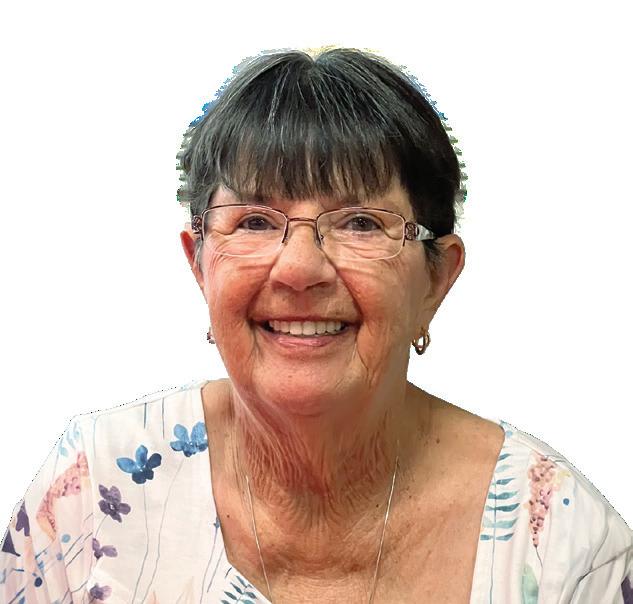
I take an early morning coffee break and have a conversation with God.
Mary Bennett LOOKING FOR EMPLOYMENT

I say a prayer and ask Jesus to direct my path.
Rachel Aderman, REGIONAL SALES MANAGER INVESTORS TITLE COMPANY

The answer for me is to “fail forward.” When faced with challenges, I choose to persevere. The key is to persevere even when you fail.
Bryce Morrison SPEAKER/TRAINER/AI CRAFTSMAN


RATED PG13
by Penny Cooke
Reagan is a biographical film based on the book, The Crusader: Ronald Reagan and the Fall of Communism by Paul Kengor, which chronicles President Ronald Reagan’s political career and his overthrow of the Soviet Union. I found the movie entertaining, informative, and gripping, with great acting.
However, there have been many negative reviews by critics who only give it a 20 percent score. Yet moviegoers are raving and give it 98 percent. Critics say there are omissions, distortions, and untruths. Others say they are amazed at the accuracy of the film. Critics say it was slow and poorly written. Yet at my theater and everyone I’ve talked to says moviegoers applauded at the end and stayed, captivated by the pictures afterward.
After seeing the film, it seems to me critics are spinning the best scenes in the film in a negative way. It can’t be that bad if it finished third at the box office its first and second weekends, exceeding expectations.
The gap between critics and audience is quite telling. Perhaps when you get right down to it, the film is about the battle between good and evil. Throughout the two hours, I felt like I was watching a movie about our current times. The odd man out revitalizing the economy and ending wars, fighting for freedom for America against those who threaten it, even to the extent of impeachments and assassination attempts.
Perhaps the timing of this movie is needed to remind us that communism will always be a threat and evil will always need to be confronted. It reminds us we

need tough leaders with clear insight who recognize and understand its danger, are determined and courageous, and unapologetically stand up to it. The film gives hope because Reagan exemplified strength and overcame the odds.
The story is intriguingly told by an aged former KGB agent, Viktor Petrovich (Jon Voight), when a curious young politician, Andrei Novikov (Alex Sparrow), meets with him to ask about how the Soviet Union fell. Petrovich proceeds to reveal his curious fascination of Reagan (Dennis Quaid) from the time he was head of the Screen Actors Guild.
The film moves back and forth between Petrovich schooling Novikov and scenes from Reagan’s life. It covers his childhood and teen years, his alcoholic father, his wise, faith-filled mother who teaches him to stand up to bullies, and his own faith journey. It follows his time in the film industry, his first marriage to Jane Wyman (Mena Suvari) and his marriage to Nancy (Penelope Ann Miller), and of course the battles and victories within his political career.
There are some interesting portrayals of the inside workings of government: Reagan as an FBI informant, Governor of California, and losing the Republican nomination for president. It depicts how his popularity grew to become our 40th president in 1980 and winning reelection by a landslide in 1984. It shows the difficulties of diplomacy between the US and Russia, and Reagan’s meeting with Mikhail Gorbachev to negotiate nuclear disarmament. And of course, his famous speech demanding Gorbachev, “Tear down that wall,” which led to the end of the Soviet Union.

The film concludes with Reagan’s final battle, Alzheimer’s disease, and his beloved Nancy draped over his casket along with the American flag. Maybe the reason some say Reagan is incredibly accurate is because it is based on a book for which the description states:
“Based on extraordinary research . . . The Crusader makes use of key sources from behind the Iron Curtain, including one key memo that implicates a major American liberal politician in a scheme to enlist Soviet premier Yuri Andropov to help defeat Reagan’s 1984 reelection bid. Such finds make The Crusader not just a work of extraordinary history, but a work of explosive revelation.”
Reagan is an important film for our day and much needed to teach younger generations about the realities of communism. If you haven’t seen it, I highly recommend it to help us all recognize the threats to our republic even today.

Penny Cooke is an awardwinning author of Pursuing Prayer: Being Effective in a Busy World, The Wake-up Prayer children’s book, and her latest, Pursuing Prayer for America. She co-hosts the Seeds of Hope podcast with Del Bates on Wednesdays on Vero’s Voice Facebook page. Learn more at pennycookeauthor.com
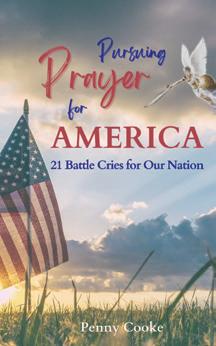


If this Amendment passes, ABORTION WILL
AND TEENS COULD

Read full text of the Amendment:

This amendment: has no definitions of key words “viability” or “healthcare providers”. (unlike other amendments). This means dangerous loopholes! says any healthcare provider (not OBGYN doctors) could determine when abortion is necessary for the patient... i.e. tattoo artists, opticians, dentists and other Regulated Professions by The Florida Department of Health. would make abortion the only medical procedure minors could have without parental consent! pretends to bring things back to how it was before Roe v. Wade was overturned, but it actually creates a constitutional state right to abortion throughout the entire pregnancy with no protections for the unborn baby.


by Glenn Sudnick, CERTIFIED SOMMELIER
Ithought this would be a good way to get your attention to talk about the great wine from the Beaujolais region of France made from the Gamay grape. Even though we may find other varieties of grapes grown here, such as Chardonnay, Aligote, Pinot Noir, and Pinot Gris, over 95% of this area is planted with Gamay grapes, accounting for more than 50% of the world vineyard acreage.
The word “Cru” is a French term relating to a regional wine classification that a certain vineyard is recognized as producing quality high-end wine. There are ten cru which grow the Gamay grapes. From north to south they are: Saint-Amour; Julienas; Chénas; Moulin-á-Vent; Flurie; Chiroubles; Morgan; Régnié; Côte de Brouilly; and Brouilly. Even though they are geographically close, the profiles of the wines could not be more different - from the largest cru of Brouilly with bright blueberry and currant aromas, to the richness and structure of the age-worthy Moulin-á-Vent wines.
This year with dinner I’m serving a wine from the Morgon AOP (Appellation d’Origine Protégée). It is expressive with cherry and plum, and is reminiscent of a fine earthy Burgundian Pinot Noir.
For the entrée we are serving seared duck breast with Gamay sauce, a touch of rosemary, roasted cherry tomatoes, and fried cabbage. The cabbage is sautéed with bacon drippings, a pinch of sugar, and a splash of apple cider vinegar. Served with the Morgon Beaujolais, for me, this is an autumn classic!
We’ll make sure the servings of dinner are just the right size to allow room for dessert: an autumn pumpkin roll with a small glass of aged Port wine. Cheers!















by Barbara Freund
Icame across this recipe while looking for new ways to prepare all the apples we just picked. Another reason I love the fall in New England. This is a homemade apple pie filling, baked inside a scooped-out apple, topped with lattice pie crust. Serve warm with a scoop of vanilla ice cream and you’re in apple heaven. Look for large firm apples like Granny Smith or Honeycrisp, as perfectly round in shape as you can find. I used prepackaged pie crust.

INGREDIENTS
1 pie crust
1 teaspoon cornstarch
1 tablespoon (15ml) warm water
5 large round and firm apples
1 teaspoon cinnamon
1/2 cup (100g) granulated sugar
1 teaspoon vanilla extract
1 large egg
1 teaspoon milk
Coarse sugar
Salted caramel sauce, for drizzling, optional
INSTRUCTIONS

1. Prepare the lattice crust: On a floured work surface, lay out the pie dough. Using a pizza cutter, cut into fourths (like you would cut a pizza). Then cut each quarter into 1/4-inch wide strips.
2. Carefully lay the strips on a large cutting board and place in the refrigerator while you prepare the filling. You want COLD pie dough to go in the oven.
3. Make the apple filling. In a very small bowl, mix the cornstarch and warm water together until smooth and the cornstarch has dissolved. Set aside. Peel and dice 1 apple. In a medium saucepan over medium heat, cook the apple pieces with the cornstarch/water mixture, cinnamon, and sugar. Stir constantly for 5 minutes. Lower the heat and simmer another 5 minutes. Remove from heat, stir in the vanilla, and allow to cool 20 minutes.
4. Preheat oven to 375°.
5. Slice off the tops of the 4 remaining apples. Using a melon baller, dig out the core. (It doesn’t have to be perfect.) Spoon the prepared apple filling into the cored-out apples.
6. Lay 3-4 strips of the pie dough on top of the apple. Then, working with one new strip at a time, alternate weaving it over and under the dough strips already in place. Repeat until the top of the apple has been covered in a lattice crust. Using a sharp paring knife, trim excess pie crust around the edges. Repeat with remaining apples and pie dough strips.
7. Place apples into an 8- or 9-inch square baking pan.
8. In a small dish, whisk the egg and milk together. Lightly brush the tops with egg wash. Sprinkle a little coarse sugar on top of the egg wash before going into the oven. Bake for 25-30 minutes or until the crust is browned and the filling is bubbly.
9. If desired, drizzle each with salted caramel. Best served immediately. Store leftovers in the refrigerator for up to 2 days.

It’s not fall in New England until you’ve eaten your first fresh apple cider donut. These are full of flavor from the apple cider reduction and the addition of apple pie spice. (If you don’t have any on hand, there’s a recipe for make-it-yourself.)
They’re best served warm. Pop in the microwave briefly to reheat.
INGREDIENTS
For the batter
1 cup apple cider
2 cups all-purpose flour
1 and 1/2 teaspoons baking powder
1 and 1/2 teaspoons baking soda
1 teaspoon cinnamon
1 teaspoon apple pie spice
1/4 teaspoon salt
1 large egg, room temperature
2 tablespoons butter, melted
2/3 cup brown sugar
1/2 cup buttermilk
1 teaspoon vanilla extract
2 Tablespoons applesauce
For the topping
1 cup sugar
2 tablespoons cinnamon
For the batter
1. In a small saucepan, simmer apple cider for 10-15 minutes until it reduces down to 1/2 cup. Place the cider in the refrigerator to cool.
2. Preheat oven to 350 degrees. Mist mini-muffin pan or donut pan with non-stick cooking spray and set aside. Or brush pans with melted butter.
3. In a large bowl, whisk together flour, baking powder, baking soda, cinnamon, apple pie spice, and salt. Set aside.
4. In a medium bowl, whisk together the egg, melted butter, and brown sugar.
5. Stir in the buttermilk, vanilla extract, applesauce, and apple cider.
6. Add the wet ingredients to dry ingredients. Stir until just combined – do not over mix.
7. Pour batter into prepared mini-muffin pan or donut pan, filling 3/4 of the way full. Bake for 9-10 minutes for donut holes, or 9-12 minutes for regular sized donuts, or until toothpick inserted into center comes out clean with a few moist crumbs.
For the topping
1. While the donuts are baking, pour the cinnamon and sugar into a large Ziploc freezer bag and shake to combine.
2. When the donuts are cooked, quickly remove from the pan and carefully put them in the bag and shake to fully coat.
3. Donuts taste the best the same day but can be stored in an air tight container for up to 2-3 days at room temperature.
Quick and easy homemade
Apple Pie Spice. Tie a ribbon around the lid and gift it to a fellow baker.
MAKES 15 TEASPOONS
INGREDIENTS
1/4 cup ground cinnamon
2 teaspoons ground nutmeg*
1 teaspoon ground ginger
1 teaspoon ground allspice
INSTRUCTIONS
• In a small bowl, whisk the spices well to remove any lumps and combine.
• Store in a small mason jar or other airtight container out of direct sunlight. Keeps about 6 months.
*Freshly grated nutmeg has a stronger taste than store-bought, so adjust the amount accordingly.
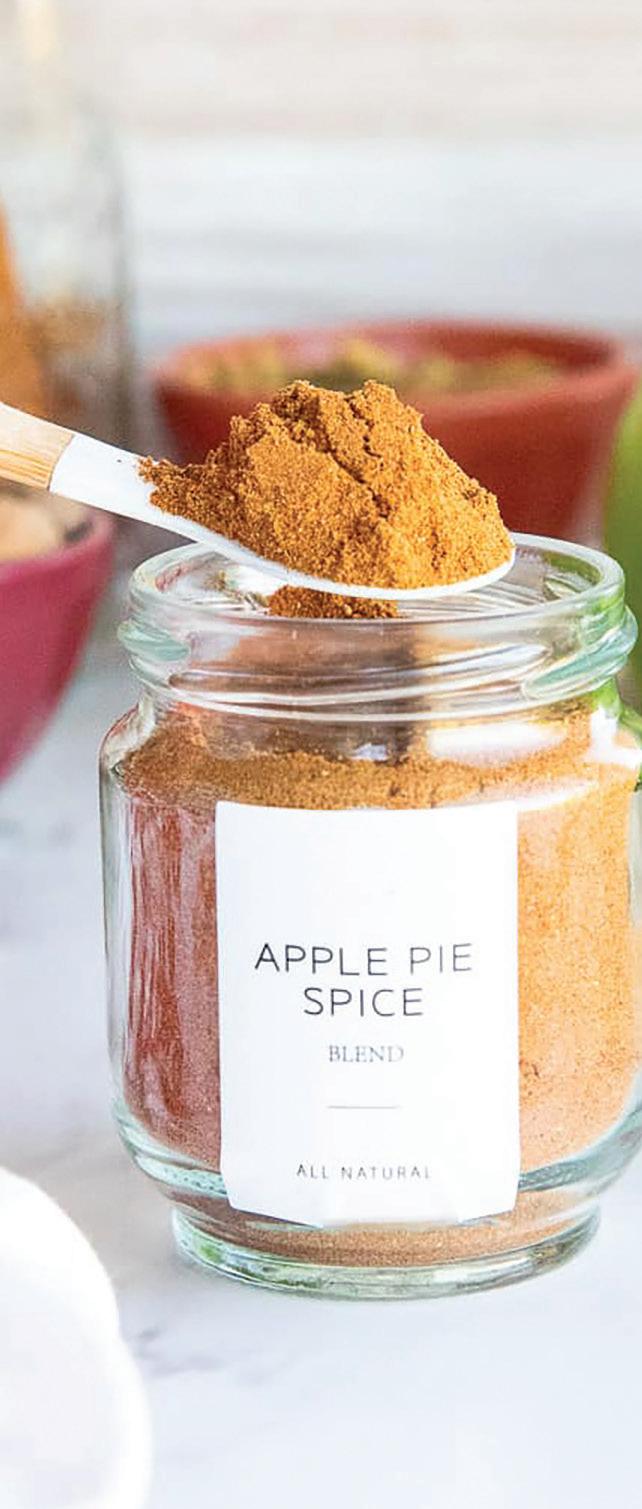

A delicious fall side dish that goes well with chicken or pork.
INGREDIENTS
4-5 slices thick-cut bacon (5 ounces)
1 tablespoon extra virgin olive oil
4 small apples, (about 4 ounces each) such as Lady or Gala, unpeeled, halved lengthwise and cored
6 garlic cloves, halved lengthwise
1 sage sprig
1/4 teaspoon each salt and pepper
3/4 cup low-sodium chicken broth
3/4 cup unfiltered apple cider
DIRECTIONS

1. Cook bacon and olive oil in a large skillet over medium heat until lightly browned and starting to render, about 4-5 minutes. Remove bacon and set aside. Transfer bacon to a bowl, dice or crumble, and set aside.
2. Add apple halves to the skillet, cut sides down, and increase heat to medium-high. Cook, undisturbed about 5 minutes, until well browned. Adjust the heat as necessary to prevent over-browning.
3. Flip the apples, and arrange the bacon pieces, garlic, and sage around the apples. Sprinkle apples with salt and pepper. Add the broth and cider and bring to a boil over medium-high. Reduce heat to medium-low. Partially cover and cook apples, undisturbed, until tender but still retain their shape, 8 to 10 minutes. (Do not flip again.)
4. Transfer apples to a serving plate using a slotted spoon and cover with foil to keep warm.
5. Bring cider mixture to a simmer over medium-high heat. Cook, stirring occasionally, until reduced by half and slightly thickened, about 3 to 5 minutes. Spoon cider mixture, bacon and garlic over apples. Serve immediately.






by Marianne Howell

















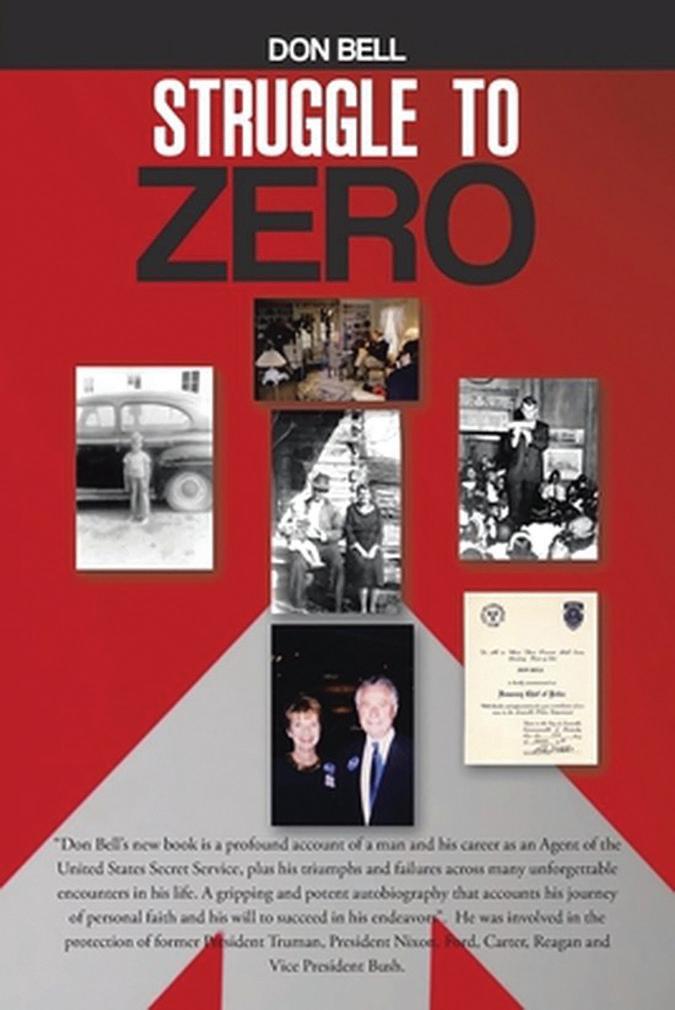


WORD LADDER
Change one letter of the top fourletter word to create a new word below. Continue the process, ending with the word on the bottom rung.


CUndergoing hard-earned transformation always results in the incredible freedom that soaring brings.

by Beth Walsh Stewart
hange hurts. Ask any butterfly. When you see that beautiful creature dancing through the sky, stopping for moments to feast on the nectar of his favorite flower, you wouldn’t know it. Colorful and dainty, the average butterfly has undergone incredible hardship.
After emerging from an egg, the child larva outgrows its skin four or five times and undergoes splitting and sensitive emergence. You think your childhood was rough? And that’s just the beginning of the growing pains. The pubescent larva will withdraw into a cocoon where it will undergo radical development and transition. This stage is even marked with an ungodly name – pupa. Every cell in the caterpillar body contorts under pressure, trying to become.
You remember that from your high school years, right? Gosh, how we wanted to become more than was expected, and how painful it was trying to force it.
Sadly, the real fight to true transformation is still in store. Hoping to find more in this big, beautiful world, the butterfly will have to fight its way out of the boundaries and safety of its cocoon to emerge into the world of wholeness. The struggle is real, and all the previous work depends on this moment. Every butterfly must free itself from the shackles of its chrysalis.
Like its human counterpart, the butterfly must WANT freedom if it is to succeed. Sometimes it comes down to this: Which hurts worse? The pain of immaturity or the pains of discipline and change? Much like human beings, the battle to mature belongs to the individual. The best decisions often come on the heels of desperation.
“Is it worth it?” you ask. Consider that question when suddenly the fight becomes the flight. Undergoing hard-earned transformation always results in the incredible freedom that soaring brings. Surely, like the butterflies we love, we were meant to soar. Metamorphosis is possible for all of us, no matter what our age.
When the ache of staying the same becomes greater than the fear of making a change, we arrive at the turning point. The turning point is a wonderful place where minds and hearts open to possibility. In this stance, we are able to ask for help because we desire a new life that is fostered in new ideas, approaches, and actions. We look to others and to God with real hope because we realize we don’t have all the answers.
Don’t sell yourself short. You were meant to soar like a butterfly.
Beth Walsh Stewart, MTh, is the Creator of BethWe, the nonprofit that was the impetus for this work. Dedicated to rescuing the stragglers lost in the shadows of the road of life, Beth is best-known for her Good Seed Podcasts, 12-Step seminars, weekly blogs, g.o.d. speaks books, and uplifting workshops. Beth lives by this motto: I have been called to help my brother find his authentic self and his God, and I best accomplish this end by sharing my pursuit of the same.














Puzzles on page 26
REV’S VERSES by Pastor Rich Ienuso

In the Gospel of John 4:35, Jesus says “…the fields… are white already to harvest.”
Jesus is talking about those who need to come into His Kingdom. They are the “field” and they need to be “harvested.” They need to come to Jesus and we are the ones to bring them in. Christians are the laborers.
But there are few that want to labor (Matthew 9:37).
Let us pray for the Lord to send laborers into the harvest, and let us be the answer to that prayer. We cannot become weary in doing well because we will reap if we don’t faint (Galatians 6:9).
People need the Lord now more than ever. Have you come to Jesus yet? If not, today is your day to surrender and accept Jesus as your personal Messiah, Savior and Lord.
Blessings, Pastor Rich

WORD WHEEL:
Some of the words that can be made from the wheel include: are, arf, art, ear, era, far, rat, raw, ref, tar, war, afar, area, earl, fare, fart, fear, fret, raft, rate, real, tare, tear, ware, wart, wear, after, alert, altar, alter, aware, feral, flare, later, trawl, wafer, waler, water, falter, taller, tellar, wafter, waller, lateral, lawfare, flatware, waterfall
mobile application and play thousands of Sudoku puzzles anytime, anywhere!

he Patriot Church’s goal is to educate you about the truth of our country’s founding and empower you to engage in the Battle for the Heart and Soul of America. Join the Sacred Cause to Save our Republic! Tune in Wednesdays, 11:00am-12:00noon 4th Sunday in Sebastian,
Wimbrow Dr, 10:00am 5th Sunday in Vero Beach, 4425 71st St, 10:00am


Friendship has always been a cornerstone of human experience, celebrated across all cultures.
And yet no one has elevated the concept of friendship quite like Jesus. In a revolutionary departure from the hierarchical norms of His time, Jesus insisted on calling His followers friends rather than servants. “I no longer call you servants, because a servant does not know his master’s business. Instead, I have called you friends, for everything that I learned from my Father I have made known to you” (John 15:15). This radical redefinition of relationship with the Divine set the stage for a new understanding of human relationships.
The parable of the Good Samaritan stands as a timeless testament to the true nature of friendship. In this story, Jesus paints a vivid picture of compassion that transcends societal boundaries illustrating that a true friend is one who extends a helping hand in times of need. This narrative breathes life into the age-old adage, “A friend in need is a friend indeed,” reminding us that genuine friendship is proven in adversity.
In our modern world, the concept of friendship faces unprecedented challenges. We find ourselves in the midst of what can only be described as a friendship deficit. In an age of hyper-connectivity, loneliness has become endemic. The digital revolution, while connecting us globally, seems to have disconnected us locally. Our relationships with devices – smartphones, computers, and tablets – have overshadowed personal relationships and connections. The relentless pursuit of material success in our competitive society has further eroded the soil in which deep friendships take root. The prioritization of profit over people has created an environment where genuine connections struggle to thrive.
Yet it is precisely in this context that we must return to the Christian concept of friendship as a cornerstone of faith and humanity. The Old Testament provides us with beautiful examples of friendship, such as the bond between David and Jonathan, reminding us that this value has
always been central to our faith tradition. True friendship goes beyond mere acquaintance or association. It is a deeper, more permanent and profoundly human connection. It is the essence of being a Christian – to be a friend to others the way Jesus is a friend to us.
The capacity for friendship extends beyond human relationships. Many find solace and unconditional love in the companionship of pets whose loyalty and affection often mirror the steadfast love we associate with divine friendship.
It is disheartening to observe that genuine friendship is often lacking within the Church itself. Many Church institutions have become more focused on money and external religious observances rather than fostering an environment where true friendships can flourish. This misalignment with Christ’s teachings is the source of scandal, ignoring true friendship towards our brothers and sisters in need..
As we navigate life’s journey, we come to realize the rarity of true friendship. While we may have numerous acquaintances, few are the friends in whom we can truly confide, from whom we can seek support in times of distress, and who will offer comfort in our darkest hours. Such friendships are invaluable, deserving of our utmost respect. Such friendships can be lifesaving, providing a lifeline in a world that can be cold and indifferent.
Jesus imparts a profound truth: Friendship with Him is friendship with one another. He provides the ultimate model of how to be a friend to others.
Let us heed the call to be true friends – with God, with one another, and even with ourselves. In a world starving for genuine connection, may we be living examples of the Lord Himself, extending the hand of friendship to all we encounter.
—Fr. Hugh Duffy, Ph.D.




































Riverside Theatre
Village Beach Market
CVS-A1A
Vero Beach Hotel & Spa
Cobalt
Seaside Grille
Corey’s Pharmacy
Lemon Tree
Ocean Grill
Holiday
Ryder’s Gourmet Market
AMAC
Di
Marine
Ryder’s
iThink

Seacoast Bank


































S.T.A.R.

